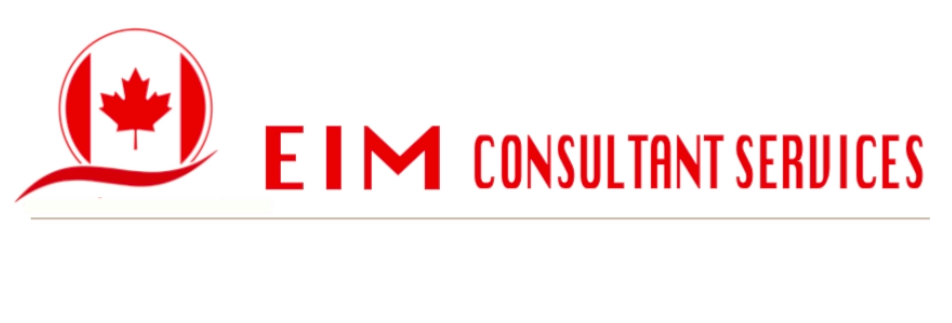Christin Walker of Burlington, New Jersey, is a safe driver. She proved it by navigating a school bus full of noisy and, occasionally, boisterous children on country roads and city streets for 22 years.
But even good drivers can have bad accidents. Little more than a week after she purchased her used 2006 Honda Civic, it was smashed and totaled by a hit-and-run driver who—according to the police report—zoomed through a red light. Walker considers herself lucky she wasn’t hurt. That same driver was involved in another accident less than a month later which killed a pedestrian.
Among the problems: She hasn’t yet received a settlement from any insurance company, she has no car and she still has to make loan payments on the Honda that’s now rusting in a recycling center. She’s frustrated enough to file a claim against the insurer of the car that hit her.
If Walker does make an insurance claim, she’s not alone. There are about 6 million crashes reported by police every year in the U.S., according to the National Highway Traffic Safety Administration. About 3 million people are injured or killed in these car accidents, so there are a huge number of lawsuits and insurance claims every year.
Making an Insurance Claim Against Someone Else
If someone else crashes into you, in the simplest scenario you’ll make a claim against their liability insurance. This is called a third-party claim: You’re the third party to the other driver and their insurance company.
The other person’s insurer will process the claim, but don’t count on a quick payment. The insurer might want to investigate the accident to determine that their customer truly was at fault.
Using Your Own Insurance to Fix the Problem
But if insurance claims were simple, we could all feel like insurance experts. And when someone else has caused an accident, it’s natural to feel that they should pay for what they did. But in some cases you might need to turn to your own auto insurance, even when someone else crashed into you. Here’s how that could happen.
Situation No. 1: No-fault states
In states with no-fault insurance laws, you always make injury claims on your own insurance first. These states require personal injury protection (PIP insurance) for this purpose. You can sue another driver only when you meet certain qualifications, which each state defines. In many cases there needs to be serious injury or death before you sue someone else for a car crash in a no-fault state. (Property damage claims can still usually be made on the other person’s liability insurance.)
In states without no-fault laws, PIP and a similar coverage called medical payments (MedPay) are often available. These can be used for injury claims for you and your passengers.
Situation No. 2: An underinsured driver
What if the driver doesn’t have enough insurance to cover accident injuries they cause to others? You could still sue them for the remainder, but if they don’t have any assets it may not be worth it. One option is to turn to your own underinsured motorist coverage, if you have it. It can cover medical bills when the other driver doesn’t have enough insurance.
Situation No. 3: Not dealing with it
You could decide to use your own insurance for car damage, rather than dealing with the other person’s insurance company. If you have collision insurance, you can use it for car damage caused by someone else.
The downside is that your insurance check will be reduced by your collision deductible amount. You might get that deductible amount back later if your insurance company goes after reimbursement from the other person’s insurer.
If you have rental reimbursement coverage, you could tap that as well for a rental while your vehicle is in the repair shop for a collision claim.
Situation No. 4: Getting stuck with a car loan balance
If your vehicle was totaled in the accident, insurance should compensate you for the value of the car at the time of the accident—whether you’re making a liability claim against someone else or using your own collision insurance.
But that doesn’t mean the problem is solved. In some cases you could owe more on a car loan or lease than what the car was worth. This can happen, for example, if you financed most of the cost of the car, or you have a vehicle that has lost value quickly. In any case, having gap insurance can provide the difference between the insurance payment and the loan/lease balance.
Or You Could Sue
Another way to get compensation is to hire a lawyer and sue the other driver.
You may need to help establish that the other person was indeed at fault, especially if they start finger-pointing at you. Items such as a police report, photos from the scene and the contact information for any witnesses will help prove you weren’t to blame.
If the likely settlement for a car accident is small—around $3,000 and you have a provable case—you could opt to take the other driver to small claims court.
While each state has different rules, most local governments have some version of small claims court. Filing fees are usually reasonable, and the wait time for a hearing is generally about a month or two. You also have the right to subpoena witnesses, including the other driver, the insurer’s claims adjuster, and anyone else who may have been involved with the accident. Have all your information available, as well as certified estimates for the cost of repairs.
The upside to this process is that it forces the other person’s insurance company to send a lawyer and any witnesses needed to prove its case—or to dispute the amount of the lawsuit —to court. This could lead to settlement talks.
At the Scene of an Accident
Protecting your ability to sue someone else starts at the scene of the accident. It’s good to have an accident checklist to help you gather the right information.
Make sure you’re OK and stay safe
If you’re involved in a car accident, the first thing to do is step back, catch your breath and make sure you and your passengers haven’t been injured. Soft tissue injuries are a concern even in a bumper-bump, and injuries raise the stakes for an insurance claim.
Assuming there are no injuries, it will still be stressful for both (or all) parties to the accident. Try to minimize road rage (yours and theirs) in the inevitable exchange of driver information. Pull your car over to a safe spot if possible. Don’t stand on a crowded or high-speed road unless you have to. And if possible, stay inside the car, dial 911 and wait for the police.
Exchange information
If the other driver or drivers are reasonable, make sure they get what they need to file a claim, and that you do as well. Someone else really only needs your insurance information from your insurance ID card. Many insurers provide a car accident checklist in their mobile apps, or you can print one out and keep it in the glove compartment.
Take photos
The most valuable tool after a car accident is your cell phone. Take pictures of:
- Damage to your car and the other vehicles involved
- License plates
- Road conditions like ice, rain or snow
- Any other contributing factors such as nearby intersections and road signs
- Other drivers’ insurance ID cards
Your phone should date stamp and record the time the photos were taken. You should also note the names and phone numbers of any witnesses.
Get police officer information
Make sure to verify the responding police officer’s name and badge number, which could be scrawled illegibly on any document you receive. Obtain a copy of the police report as soon as it is filed, and check for accuracy.
Contact your insurance company
Don’t waste any time in contacting your insurer, no matter who was at fault. Here too technology could come to your rescue, as many insurers let you file claims from their mobile apps.
“Make sure to submit the claim within your insurer’s time limit,” advises Loretta Worters, vice president of the Insurance Information Institute, an industry group. “Deadlines for filing vehicle damage claims are typically 30 days so ask your insurer if your policy has a time limit for submitting bills, resolving claims disputes and submitting additional information.”
Common Reasons Auto Claims Are Denied
Sometimes the auto insurance claims process proves to be very unsatisfying. Common claim denial reasons include:
The accident was avoidable or preventable
The insurance company could deny the claim if it thinks the accident was avoidable—for example, letting an unlicensed driver operate your vehicle.
You didn’t file a claim in time
Insurance companies prefer to have customers file claims as soon as possible. And it’s wise to do so anyway, before the damage has gotten muddied or the accident witnesses have disappeared. States may set firm deadlines for making claims, which could be anywhere from one to 20 years.
Delaying medical care
Immediately after an accident, you may not know the full extent of your injuries. But if you delay treatment for injuries for too long, the insurance company may be suspicious of the claim, which could result in an investigation and even a denial.
Stating the facts is important after an accident. Don’t try to speculate about what happened if you’re not sure, or decide to accept fault at the scene. Also, the claims process isn’t the time to be chatty. Don’t overshare; too much information could impact the outcome of your claim.
What to Do If Your Auto Claim is Denied
If your auto insurance claim was denied, ask for the reason for denial in writing. You’ll want to understand the precise reason why the claim was denied and, if necessary, how to appeal the denial. It could be that they’re wrong, or it could be a legitimate denial—for example, because you didn’t carry the right coverage for the claim.
Review the current evidence and then submit a letter that describes how the evidence contradicts the insurance company’s decision. If you’re uncomfortable disputing the denial alone, you may want to consult with an attorney for legal advice.
Related: When To Hire A Lawyer For An Insurance Claim
Understanding Basic Car Insurance Types for Claims
After a car accident, it’s a good idea to read your auto insurance policy to check your coverage. Your insurance agent may have already told you what you are—and aren’t—entitled to, but check for yourself. This is when having a reputable insurer with a good reputation will pay off.
Every car insurance company offers the same basic coverage types. The required ones vary by state and the rest are optional—and some optional coverage types are a wise buy.
Liability insurance
Liability insurance is the most basic coverage for all vehicles. You must have this in case you’re guilty of hitting a person, car, or even running over a garden gnome in someone’s yard. Liability insurance pays for a victim’s claims for damages such as medical expenses, property damage, lost wages and pain and suffering.
Almost every state requires minimal liability coverage, but amounts vary. California car insurance, for example, is a minimum of only $15,000 in injury coverage for one person in an accident. Florida car insurance requirements are even lower at $10,000 for injury coverage to one person in an accident. That coverage may prove to be woefully inadequate with medical costs and today’s litigious society.
You can be sued for amounts that exceed your auto insurance. For those with assets and savings, a high amount of auto insurance is a way to properly protect you and your assets.
Liability insurance also pays for your legal defense if you’re sued over something covered by your policy, like a car accident.
If you have more than $500,000 to protect, you may want to look into getting an umbrella insurance policy.
Collision insurance
Collision insurance is optional unless it’s required for your car loan or lease. This insurance covers your car damage in the event that you hit an object such as a pole or another car. About 75% of drivers with auto insurance have collision insurance, according to the Insurance Information Institute.
Collision insurance is usually packaged with comprehensive coverage, so expect to buy them together. Comprehensive coverage is also optional unless it’s required for a car loan or lease. It covers theft, fire, hail, vandalism and other miscellaneous hazards such as hitting a deer or driving through water that is camouflaging an overflowing creek.
No-fault auto insurance laws
No-fault auto insurance laws in some states mean that there’s no need to determine who’s at fault in order to receive insurance payment for smaller injury claims. Each party is paid by their own insurer instead of bringing a lawsuit. Personal injury protection is the coverage for these claims.
Personal injury protection
Personal injury protection (PIP) is usually coupled with a no-fault law. It covers medical expenses from a car accident regardless of who’s at fault. But no-fault laws don’t eliminate the risk of being sued, particularly if serious injuries or death resulted from the accident.
“True ‘no-fault’ accidents are very rare,” says Sandra Watts, an insurance claim consultant. “Unless an accident occurs in a no-fault state, some percentage [of blame] will be attributed to each of the parties involved, which usually results in one of these parties being predominantly at fault.”
Related: What Is Casualty Insurance?
Best Car Insurance Companies 2023
With so many choices for car insurance companies, it can be hard to know where to start to find the right car insurance. We’ve evaluated insurers to find the best car insurance companies, so you don’t have to.
Have Patience
Whether you’re winding your way through an insurance claim or a lawsuit, being patient is crucial. Understanding your coverage will be helpful in knowing what you’re entitled to. But the starting point is buying the right coverage in the first place.




